Related Research Articles

The open-field system was the prevalent agricultural system in much of Europe during the Middle Ages and lasted into the 20th century in Russia, Iran, and Turkey. Each manor or village had two or three large fields, usually several hundred acres each, which were divided into many narrow strips of land. The strips or selions were cultivated by peasants, often called tenants or serfs. The holdings of a manor also included woodland and pasture areas for common usage and fields belonging to the lord of the manor and the religious authorities, usually Roman Catholics in medieval Western Europe. The farmers customarily lived in separate houses in a nucleated village with a much larger manor house and church nearby. The open-field system necessitated co-operation among the residents of the manor.

Land reform is a form of agrarian reform involving the changing of laws, regulations, or customs regarding land ownership. Land reform may consist of a government-initiated or government-backed property redistribution, generally of agricultural land. Land reform can, therefore, refer to transfer of ownership from the more powerful to the less powerful, such as from a relatively small number of wealthy or noble owners with extensive land holdings to individual ownership by those who work the land. Such transfers of ownership may be with or without compensation; compensation may vary from token amounts to the full value of the land.

Enclosure or Inclosure is a term, used in English landownership, that refers to the appropriation of "waste" or "common land" enclosing it and by doing so depriving commoners of their rights of access and privilege. Agreements to enclose land could be either through a "formal" or "informal" process. The process could normally be accomplished in three ways. First there was the creation of "closes", taken out of larger common fields by their owners. Secondly, there was enclosure by proprietors, owners who acted together, usually small farmers or squires, leading to the enclosure of whole parishes. Finally there were enclosures by Acts of Parliament.
Ownership is the state or fact of legal possession and control over property, which may be any asset, tangible or intangible. Ownership can involve multiple rights, collectively referred to as title, which may be separated and held by different parties.
In law, conveyancing is the transfer of legal title to (of) real property from one person to another, or the granting of an encumbrance such as a mortgage or a lien. A typical conveyancing transaction has two major phases: the exchange of contracts and completion.

The Agricultural Revolution in Scotland was a series of changes in agricultural practice that began in the 17th century and continued in the 19th century. They began with the improvement of Scottish Lowlands farmland and the beginning of a transformation of Scottish agriculture from one of the least modernised systems to what was to become the most modern and productive system in Europe. The traditional system of agriculture in Scotland generally used the runrig system of management, which had possibly originated in the Late Middle Ages. The basic pre-improvement farming unit was the baile and the fermetoun. In each, a small number of families worked open-field arable and shared grazing. Whilst run rig varied in its detail from place to place, the common defining detail was the sharing out by lot on a regular basis of individual parts ("rigs") of the arable land so that families had intermixed plots in different parts of the field.
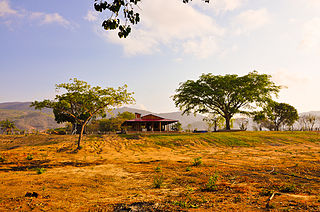
An ejido is an area of communal land used for agriculture in which community members have usufruct rights rather than ownership rights to land, which in Mexico is held by the Mexican state. People awarded ejidos in the modern era farm them individually in parcels and collectively maintain communal holdings with government oversight. Although the system of ejidos was based on an understanding of the preconquest Aztec calpulli and the medieval Spanish ejido, in the twentieth century ejidos are government-controlled.
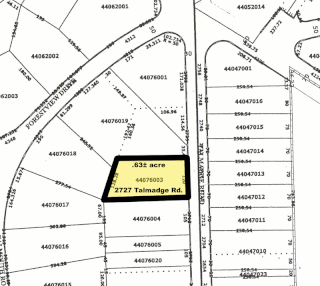
In the United States, a plat (plan) is a cadastral map, drawn to scale, showing the divisions of a piece of land. United States General Land Office surveyors drafted township plats of Public Lands Surveys to show the distance and bearing between section corners, sometimes including topographic or vegetation information. City, town or village plats show subdivisions broken into blocks with streets and alleys. Further refinement often splits blocks into individual lots, usually for the purpose of selling the described lots; this has become known as subdivision.

In agriculture, grazing is a method of animal husbandry whereby domestic livestock are allowed outdoors to roam around and consume wild vegetations in order to convert the otherwise indigestible cellulose within grass and other forages into meat, milk, wool and other animal products, often on land unsuitable for arable farming.
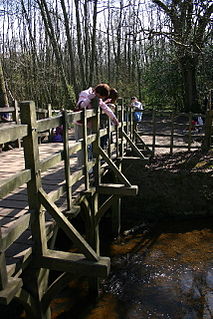
Common land is land owned by a person or collectively by a number of persons, over which other persons have certain common rights, such as to allow their livestock to graze upon it, to collect wood, or to cut turf for fuel.
Obshchina or mir, or selskoye obshchestvo, were peasant village communities as opposed to individual farmsteads, or khutors, in Imperial Russia. The term derives from the word obshchiy.
The commons is the cultural and natural resources accessible to all members of a society, including natural materials such as air, water, and a habitable Earth. These resources are held in common even when owned privately or publicly. Commons can also be understood as natural resources that groups of people manage for individual and collective benefit. Characteristically, this involves a variety of informal norms and values employed for a governance mechanism. Commons can also be defined as a social practice of governing a resource not by state or market but by a community of users that self-governs the resource through institutions that it creates.
The agrarian reforms in Cuba sought to break up large landholdings and redistribute land to those peasants who worked it, to cooperatives, and the state. Laws relating to land reform were implemented in a series of laws passed between 1959 and 1963 after the Cuban Revolution. The Institutio Nacional de Reforma Agraria (INRA)—an agency of the Cuban government responsible to implement the first and second Agrarian Reforms. The agency adapted the Soviet model of organisation—small collectives and large(er) state farms.

Before the 1910 Mexican Revolution that overthrew Porfirio Díaz, most land in post-independence Mexico was owned by wealthy Mexicans and foreigners, with small holders and indigenous communities retaining little productive land. This was a dramatic change from the situation of land tenure during the colonial era, when the Spanish crown protected holdings of indigenous communities that were mostly engaged in subsistence agriculture. Mexican elites created large landed estates (haciendas) in many parts of Mexico, especially the north where indigenous peoples were generally not agriculturalists. Small holders, many of whom were mixed-race mestizos, engaged with the commercial economy. Since foreigners were excluded from colonial Mexico, landholding was in the hands of subjects of the Spanish crown. With Mexican independence in 1821 and the emergence of Mexican Liberals, the economic development and modernization of the country was a key priority. Liberals targeted corporate landholding by both the Roman Catholic Church and indigenous villages, for they were seen as impediments to their modernization project. When liberals gained power in the mid nineteenth century, they passed laws in the Liberal Reform that mandated the breakup and sale of these corporate lands. When liberal army general Porfirio Díaz took power in 1876, he embarked on a more sweeping program of modernization and economic development. His land policies sought to lure foreign entrepreneurs to invest in Mexican mining, agriculture, and ranching. It was successful, with Mexican and foreign investors controlling the majority of Mexican territory by the outbreak of the Mexican Revolution in 1910. Peasant mobilization against the landed elites during the revolution and calls for "Mexico for the Mexicans" prompted land reform in the post-revolutionary period.
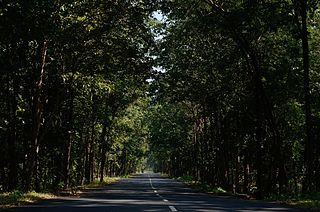
Social forestry is the management and protection of forests and afforestation of barren and deforested lands with the purpose of helping environmental, social and rural development. The term social forestry was first used in 1976 by The National Commission on Agriculture, when the government of India aimed to reduce pressure on forests by planting trees on all unused and fallow lands. It was intended as a democratic approach to forest conservation and usage, maximizing land utilization for multiple purposes.
The problem of land reform in Ethiopia has hampered that country's economic development throughout the late 19th and 20th centuries. Attempts to modernize land ownership by giving title either to the peasants who till the soil, or to large-scale farming programs, have been tried under imperial rulers like Emperor Haile Selassie, and under Marxist regimes like the Derg, with mixed results. The present Constitution of Ethiopia, which was put into force January 1995, vests land ownership exclusively "in the State and in the peoples of Ethiopia." The relevant section continues, "Land is a common property of the Nations, Nationalities and Peoples of Ethiopia and shall not be subject to sale or to other means of exchange." Despite these different approaches to land reform, Ethiopia still faces issues of sustainable food self-sufficiency.
Agrarian reform and land reform have been a recurring theme of enormous consequence in world history. They are often highly political and have been achieved in many countries.

Like slavery, serfdom has a long history that dates to ancient times.
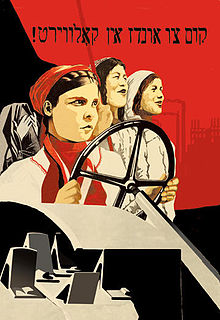
Collective farming and communal farming are various types of "agricultural production in which multiple farmers run their holdings as a joint enterprise". There are two broad types of communal farms: agricultural cooperatives, in which member-owners jointly engage in farming activities as a collective, and state farms, which are owned and directly run by a centralized government. The process by which farmland is aggregated is called collectivization. In some countries, there have been both state-run and cooperative-run variants. For example, the Soviet Union had both kolkhozy and sovkhozy.

The Land Reform Movement, also known by the Chinese abbreviation Tǔgǎi (土改), was a campaign by the Chinese Communist Party (CCP) leader Mao Zedong during the late phase of the Chinese Civil War and the early People's Republic of China. The campaign involved the mass killing of landlords by tenants and land redistribution to the peasantry. The estimated number of casualties of the movement ranges from hundreds of thousands to millions. In terms of the CCP's evaluation, Zhou Enlai estimated 830,000 had been killed and Mao Zedong estimated as many as 2 to 3 million were killed.
References
- ↑ Brown, Philip C. Arable Land as Commons: Land Reallocation in Early Modern Japan, Social Science History - Volume 30, Number 3, Fall 2006, pp. 431-461
- ↑ Hayashi, Kumpei, 2008. Merits of the Commons System for Small Users: Assurances of equal access and insurance against disasters, Consumer Co-operative of Japan, CCIJ News, March 208, no. 56
- ↑ Brown, Philip C. 1993. "Paddy and Dry Fields as Common Property: The Warichi System in Japan." Presented at "Common Property in Ecosystems Under Stress," the fourth annual conference of the International Association for the Study of Common Property, Manila, Philippines, June 18, 1993.